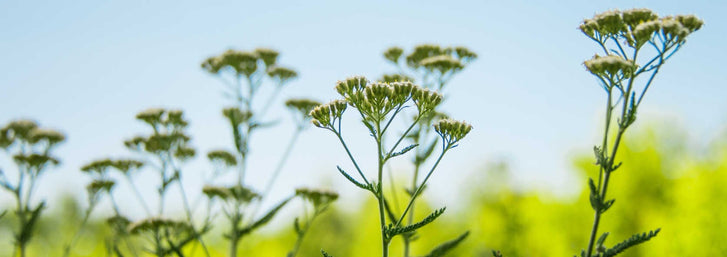
Kat Jones

Fire it up
For many of us, we can get used to sticking with the same tried-and-true crops; the ones we know we like and will eat. The one we know will not offend or shock us in the garden, kitchen, or local neighborhood pot luck. While this strategy is a great place to start, why not step out of the comfortable vegetable zone this year and try something that will make you sweat, squirm, and eventually, smile. This season is a perfect time to get started on some hot peppers and to pique your interest, let’s get to know these spicy characters!
Centuries before the creation of the Scoville heat test, around 7500 BCE to be more precise, people in the Americas cultivated and used hot peppers as a staple ingredient in their diets. Though technically peppers are considered a berry, they are often used in both sweet and savory dishes and can be incorporated fresh or dried to add heat and flavor to a variety of dishes, such as chocolate or Chiles Rellenos! The compound that gives hot peppers their infamous heat is called capsaicin. Interestingly, cultures which utilize capsaicin regularly in their diets are often located in geographically warmer climates, which can seem paradoxical considering capsaicin tends to raise the body’s temperature slightly. However, breaking a sweat is one of the only natural cooling mechanisms the body has, and for humans that have limited access to food, breaking a sweat while not expending precious calories is a critical development for survival.
While many people find entertainment in sweating it out by sampling spicy morsels from Scoville’s scale, capsaicin can also be useful for healing or pain management purposes as well. Traditionally, capsaicin was thought to be a pain substitute whereby patients would inflict a burning sensation on their bodies to distract from their main source of pain. Although this is not the way capsaicin works in the body, using it as a healing compound is actually somewhat effective. In reality, capsaicin works to exhaust pain receptors to that they become less sensitive over time. This is why consuming small levels of spicy foods over time can increase one’s tolerance for heat and therefore, expand one’s palate for adventure!
Here at Mountain Valley Seed, we have a variety of hot peppers to try this season; everything from the mildly tingle Jalapeno Tam to the tear-inducing Scorpion Butch T pepper.
Happy Planting!
Leave a comment
Your email address will not be published. Required fields are marked *
0 Comments
No Comments yet! Be the first to start a conversation
Further Reading

10 Natives of the Southwest USA for Pest Control
Written By Lara Wadsworth The Southwestern United States is a region incredibly unique to the rest of the country. The hot, dry weather can be challenging for plants and animals to thrive without additional help. That is why gardening with natives can ...

Ashleigh Smith
2024-04-157 min read0
Spring Into Action - Celebrating Earth Day
Written By Chelsea Hafer Spring is quickly arriving, and that means that Earth Day is near! Earth Day is the perfect occasion to appreciate our wonderful planet and all that it does for us and think of ways you can give back to it. In this blog post, w...

Ashleigh Smith
2024-04-154 min read0
Everything You Need To Know About Rain Gardens
Written By Lara Wadsworth Rain gardens are quickly gaining popularity for their perfect marriage of utility and beauty. What simply looks like a beautifully landscaped garden is actually a native habitat that serves as a storm drain and water sponge. B...

Ashleigh Smith
2024-04-085 min read1
Northeastern Natives for Attracting Beneficial Insects
Written By Lara Wadsworth The Northeastern United States is rich with American history, but did you also know that it is rich in plant biodiversity? Nature has learned through time how to work in harmony with the various species that attempt to thrive....

Ashleigh Smith
2024-04-086 min read1



